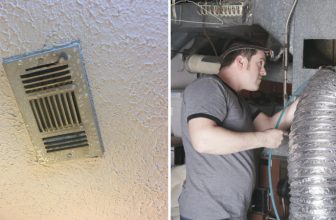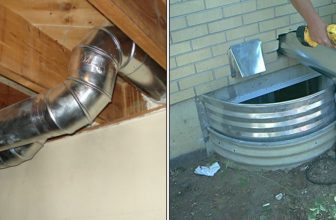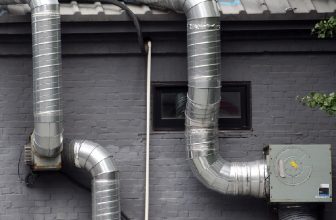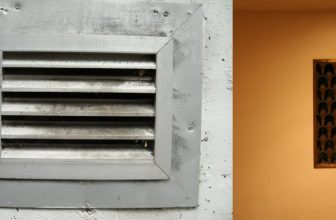How to Vent Hot Air From a Cathedral Ceiling
Venting hot air from a cathedral ceiling is important in keeping your home comfortable and energy efficient. Hot air tends to rise, so it can become trapped in a cathedral ceiling and make the upper floors of your home too warm during the summer months. Without adequate ventilation, this heat buildup can make your cooling system work harder than necessary, driving up your energy bills.
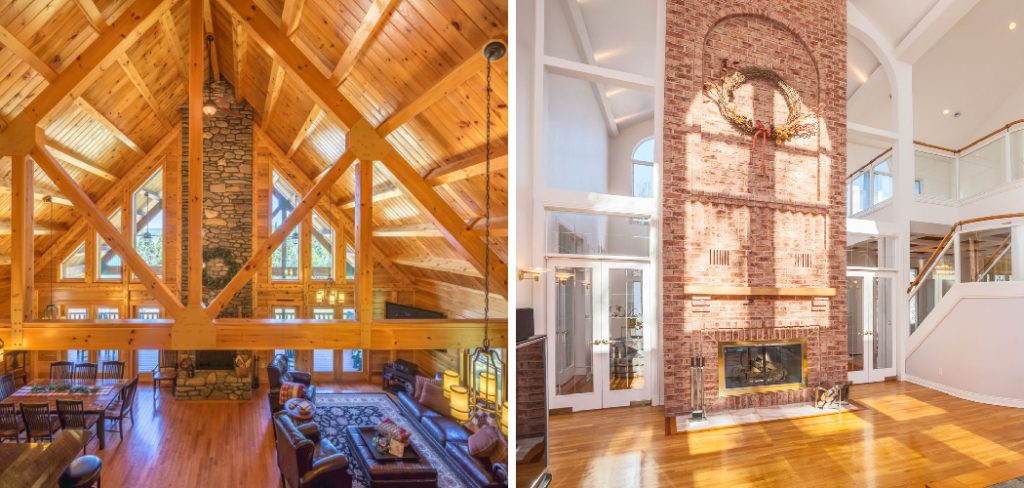
The main advantage of venting hot air from a cathedral ceiling is that it helps to regulate the temperature inside the home. Hot air is typically drawn up and out, preventing uncomfortable heat buildup during warm months.
This type of ventilation also helps to reduce energy costs by making sure that rooms do not become too hot and require extra cooling. By learning how to properly vent hot air from a cathedral ceiling, you can maintain a comfortable temperature in your home and save money on energy costs simultaneously. In this blog post, You will learn in detail how to vent hot air from a cathedral ceiling.
Importance of Venting Hot Air From a Cathedral Ceiling
- Venting hot air from a cathedral ceiling is important in maintaining the temperature and humidity levels inside your home. Doing so will help keep your living space comfortable and prevent warm air from accumulating at the top of the ceiling, which can lead to structural damage over time.
- If you have a cathedral ceiling, it is important to ensure that the air is being exchanged regularly. This can be done by installing vents or fans to allow hot air to escape and cooler air to enter the space.
- Hot air rises, so placing the vents at the highest points of the cathedral ceiling will help draw out the warmest air and also allow cooler air to enter.
- Venting hot air can help lower energy costs, since your cooling and heating system won’t have to work as hard when the temperature and humidity are balanced. It can also help prevent mold and mildew from growing in areas that may be prone to condensation due to the warm air.
- Additionally, venting hot air from a cathedral ceiling can help protect the roof structure and any insulation inside the attic space. Removing the warm air will prevent moisture from accumulating and potentially damaging not just the roof but other components of your home’s structure as well.
- Taking the proper steps to vent hot air from a cathedral ceiling is important to maintaining a comfortable and safe living space. Installing fans or vents in the right spots ensures that your home stays at optimal temperature and humidity levels while also protecting its structure.
- If you are unsure how to install vents or fans for your cathedral ceiling, contact a professional to ensure that the job is done right. With their help, you can keep your home comfortable, energy-efficient and safe.
- Venting hot air from a cathedral ceiling is an important part of maintaining your home’s temperature and humidity levels, and structure. By taking the proper steps and contacting a professional if needed, you can ensure that your living space stays comfortable while also protecting your home from potential damage.

What Are the Benefits of Venting Hot Air From a Cathedral Ceiling?
- Reducing Temperature: Venting hot air from the cathedral ceiling helps reduce the home’s overall indoor temperature and makes it more comfortable during summer.
- Improving Air Quality: Venting hot air from a cathedral ceiling also helps improve the home’s air quality by removing stale, stagnant air and ensuring that fresh air is circulated regularly.
- Reducing Energy Costs: By venting hot air from a cathedral ceiling, it can help reduce cooling costs as less energy is needed to cool the home due to the lower temperatures.
- Extended Roof Life: Venting warm air from a cathedral ceiling also helps to extend the roof’s life, as hot air can cause shingles to deteriorate over time.
- Reduced Damage to Insulation: Finally, venting hot air from a cathedral ceiling also helps to reduce damage to insulation in the attic, as it prevents heat from building up and damaging the material.
Overall, venting hot air from a cathedral ceiling is important in keeping the home comfortable and energy efficient.
Materials You Will Need
- Sheet Metal Ductwork
- Round or Rectangular Dampers
- Sheet Metal Screws
- Power Drill And Bits
- Screwdriver
- Tape Measure
- Pencil or Marker
- Level
- Ladder or Scaffolding
- Paint or Sealant (optional)
Step-by-step Instructions for How to Vent Hot Air From a Cathedral Ceiling
Step 1: Inspect the Existing Attic
Before you start any sort of ventilation project, it’s important to inspect the existing attic. Look for any pre-existing vents or fans already in place and ensure they are working properly. Installing a fan can help move the hot air out of your cathedral ceiling quickly and efficiently. Choose one that is appropriate for the size and shape of your cathedral ceiling.

Step 2: Install Additional Attic Ventilation
In addition to fan installations, you should also consider additional attic ventilation. This can be done by installing vent covers like gable or soffit vents. Gable vents are typically installed at the roof’s peak and provide an inlet for fresh air.
Soffit vents are installed on the underside of eaves and provide an outlet for hot air. Ensure you have enough ventilation to allow for proper air flow between the attic and living space.
Step 3: Insulate Your Roof
Proper insulation is essential in keeping your cathedral ceiling at a comfortable temperature. First, check if any existing insulation needs to be replaced or upgraded. If needed, install fiberglass batt insulation between the rafters in your attic. This will help keep warm air from entering your cathedral ceiling and create a barrier to prevent energy loss.
Step 4: Seal Cracks and Gaps
It’s important to pay special attention to any cracks or gaps around the edges of your cathedral ceiling. Sealing these areas will prevent warm air from entering the attic and create an uncomfortable living space. Use caulk or expanding foam to seal any openings and protect your home from energy loss.
Step 5: Install Ventilation Fans
Once you have sealed all cracks and gaps, you can install ventilation fans. Installing a fan will help move hot air out of your cathedral ceiling quickly and efficiently. Choose one that is appropriate for the size and shape of your cathedral ceiling.
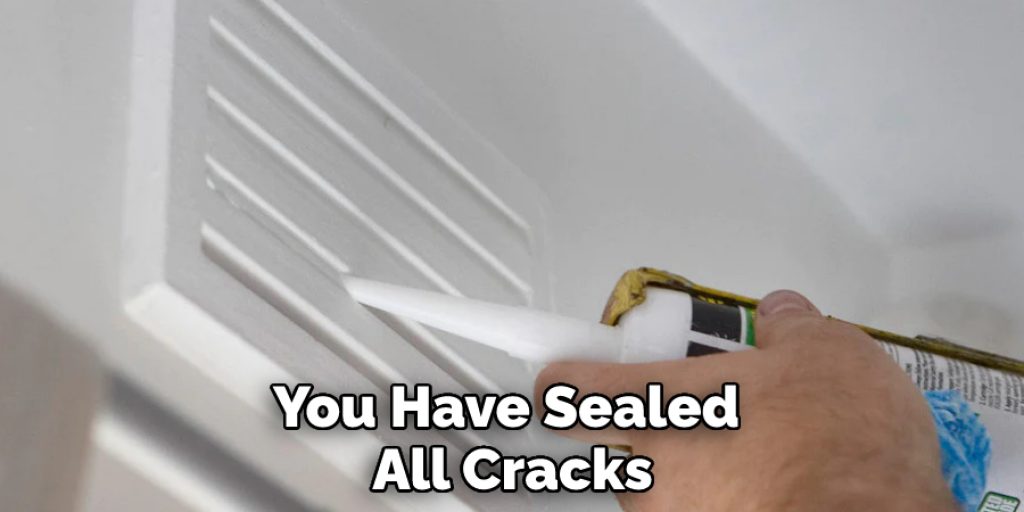
Step 6: Monitor Changes in Temperature
Once you have installed all of the necessary ventilation components, monitor changes in temperature to determine if adjustments need to be made. You may need to add additional vents or fans in order to keep your home at a comfortable temperature.
By following these steps, you can successfully vent hot air from your cathedral ceiling and create a more comfortable living space. With the right ventilation components and proper maintenance, you can enjoy a cooler home all year round.
Safety Tips for How to Vent Hot Air From a Cathedral Ceiling
- Turn off the power to any electrical devices in the area of your venting process. If there is a light or fan nearby, do not perform any work until it has been shut off and disconnected from the ceiling.
- Ensure you wear protective clothing and safety glasses while working on your project. This will help to prevent any potential injury from sharp edges, splinters, and dust.
- If you are using a ladder while working, make sure it is securely placed on a stable surface and that the rungs are tightly secured before climbing.
- When cutting or drilling into your ceiling, use extra caution to avoid hitting any electrical wires or plumbing.
- Use caution when handling and disposing of any insulation materials, as they may contain hazardous particles or fibers that can irritate the skin or lungs if breathed in.
- Make sure to clean up all debris after finishing your project, as it can be a safety hazard if left behind. Additionally, inspect your vent to ensure it is properly sealed and functioning correctly before turning the power back on.
By following these safety tips when venting hot air from a cathedral ceiling, you can ensure that your project is completed safely and without any accidents or injuries.
What Are Some Common Mistakes to Avoid When Venting Hot Air From a Cathedral Ceiling?
- Not Consulting a Professional: It is imperative to consult a professional before attempting any ventilation project for your cathedral ceiling. A professional can help evaluate your roof’s structure and advise on the best possible solutions for venting hot air from your cathedral ceiling.
- Improperly Sizing Vents: Installing vents that are too small for the cathedral ceiling can create negative pressure and cause air to be drawn back into the space. It is important to use vents that are large enough to balance out the air pressure in your home and move hot air away from your cathedral ceiling efficiently.
- Not Keeping VentsClear: To ensure proper ventilation, it is important to ensure all vents are free from obstructions. This includes leaves, dirt, and other debris that may be blocking airflow through your vents.
- Not Maintaining Insulation: Proper insulation is essential for preventing heat loss in a cathedral ceiling. If the insulation is not kept up to date or if it is inadequate, hot air will not be able to escape from the ceiling.
- Not Installing a Ventilation Fan: Installing a ventilation fan in your cathedral ceiling can help move hot air out of the space quickly and efficiently. The fan should be large enough to draw out the hot air and be connected to an exhaust vent leading outdoors.
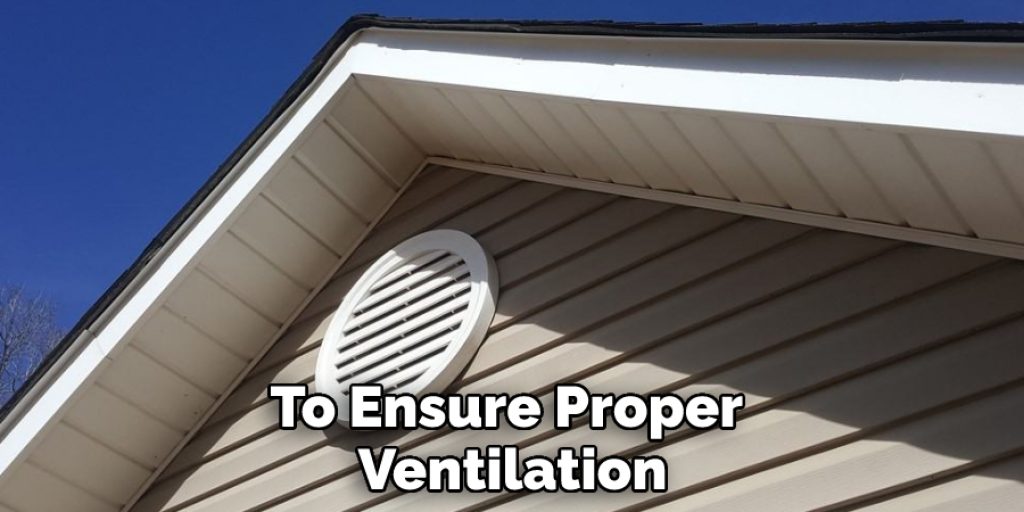
By avoiding these common mistakes, you can ensure that your cathedral ceiling is properly ventilated and free from hot air.
Conclusion
In conclusion, it is important to have proper ventilation in a cathedral ceiling to help circulate air and prevent the buildup of hot air. Installing soffits or ridge vents can be effective solutions for venting hot air from a cathedral ceiling. It is also important to ensure that there are no obstructions blocking the openings, such as insulation or other materials that could stop the air circulation.
Installing fans or adding additional insulation can also help to reduce the heat in a cathedral ceiling. By following these tips, you can ensure that your cathedral ceiling is properly ventilated and comfortable all year round. I hope this article has been beneficial for learning how to vent hot air from a cathedral ceiling. Make Sure the precautionary measures are followed chronologically.
You Can Check It Out to Hang Curtains around a Window Air Conditioner

